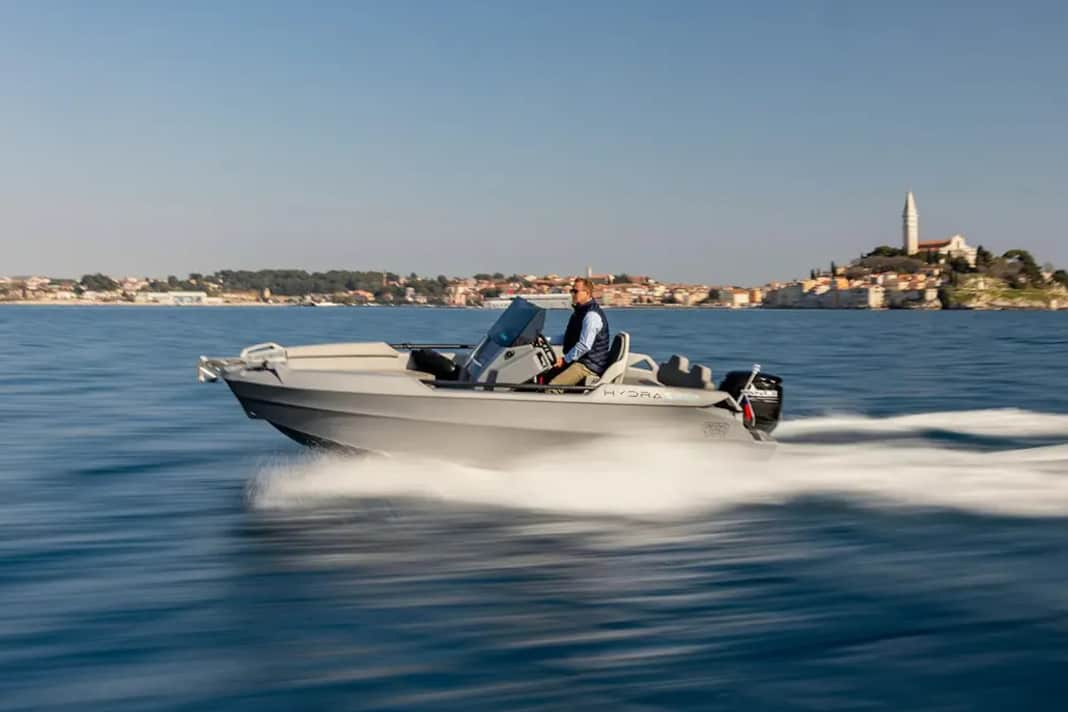



The 5.30 metre long boat is approved for engines up to 100 hp and offers space for up to ten people. The construction is based on a classic centre-console design with a centrally positioned steering console, providing generous living areas in the bow and stern. While polyethylene hulls have so far mainly been used in the utility boat sector, Roto Nautica is taking a new approach with the Hydra 530: they combine the robust durability of PE with the comfort level of high-quality GRP boats.
Functional equipment for the Roto Hydra 530
The equipment includes adjustable bucket seats at the helm, which provide the driver with a stable seating position even on longer journeys. In the bow area there is a V-shaped seating area with a table, which can be converted into a bed if required. There is an integrated luggage compartment under the bench seat in the rear area, which creates additional storage space for equipment or personal items. The cockpit is tidy and functional and is equipped with a Suzuki multi-instrument. A multifunction display and an audio system are also available, which can be integrated depending on the equipment variant. There is a permanently integrated anchor compartment in the bow for holding an anchor and line.
A continuous stainless steel bar along the longitudinal axis and non-slip surfaces are designed to ensure a secure grip on board even in wet conditions. Depending on the model variant, the Hydra 530 can be supplied in different colour configurations. It is available in the Basic, Fishing, Family and Rescue versions, each of which is tailored to different areas of use.
More efficiency thanks to "Air Step" technology
A key feature of the Hydra 530 is the innovative "Air Step" technology. This involves integrating a special step in the underwater hull that guides air under the hull in a targeted manner. This creates a thin air cushion that significantly reduces friction between the hull and the water surface. The boat glides faster, reaches higher speeds and offers noticeably more efficient performance on the water. The reduced water resistance also reduces fuel consumption. This protects the engine, lowers operating costs and improves the ecological footprint. According to Roto Nautica, the Hydra 530 is the world's first PE boat to be equipped with "Air Step" technology.
Durability and efficiency
According to the manufacturer, the key strengths of the Hydra 530 lie in its durability and low operating costs. Compared to conventional GRP hulls in particular, the PE construction offers high impact resistance and does not require vulnerable gelcoat repairs. Polyethylene is a widely used plastic that is also used for products such as canisters, pipes and robust storage containers.
The hull is manufactured from a single piece using the rotational moulding process: This involves pouring liquid polyethylene into a rotating mould, where it hardens evenly. The result is a particularly rigid, low-maintenance and fully recyclable hull. A complete package that may be of particular interest to owners in terms of cost-effectiveness, robustness and sustainability.
